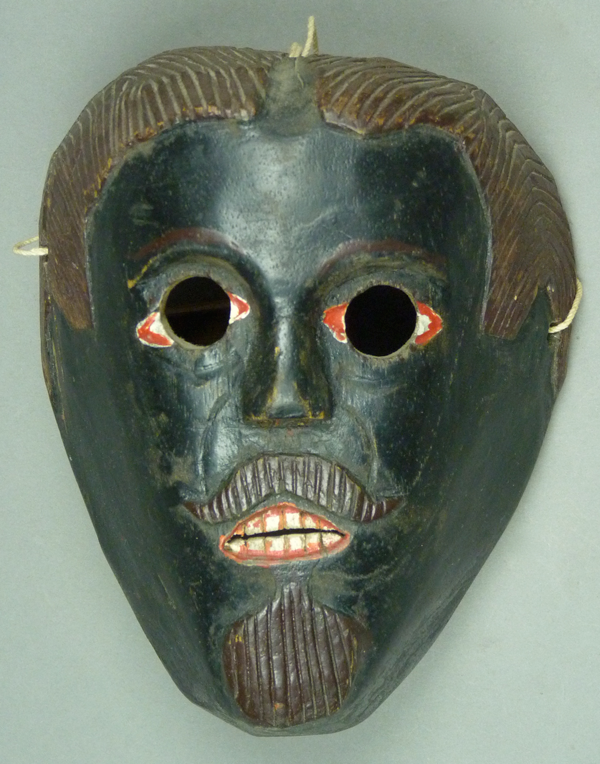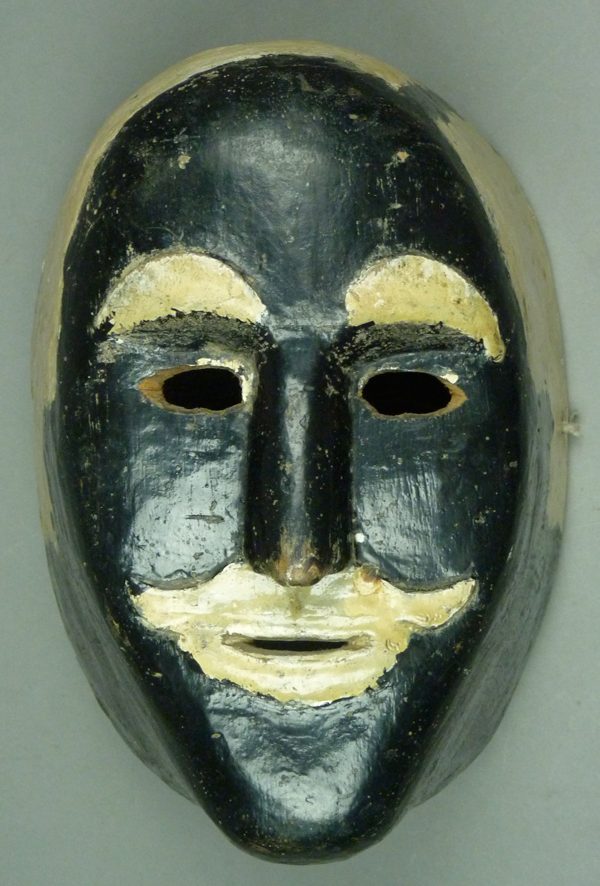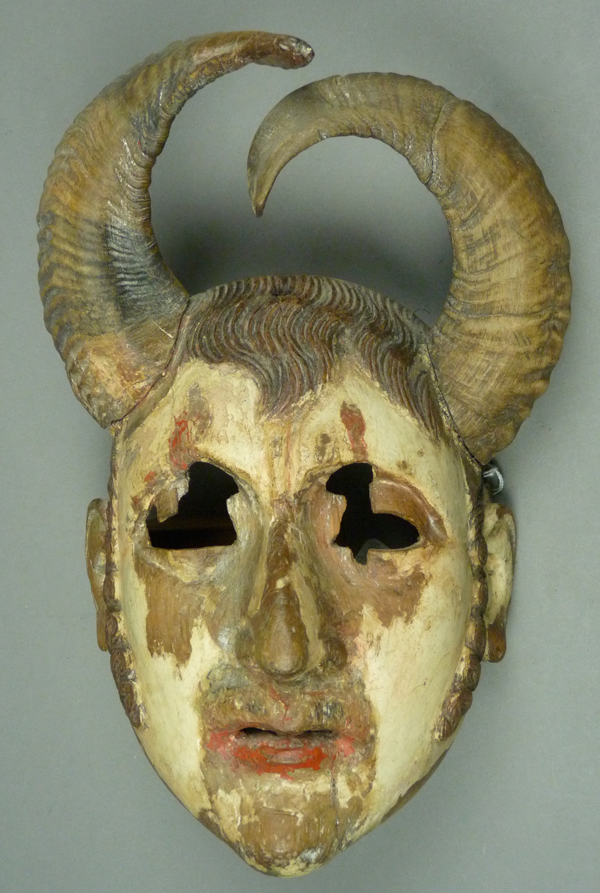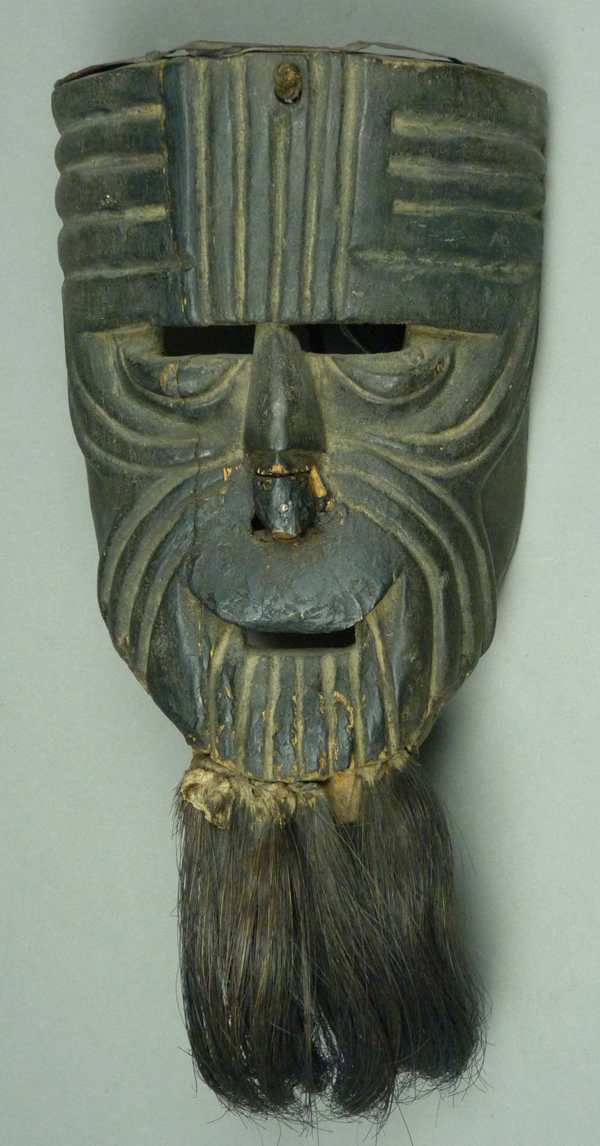According to the brief description that was provided by Jaled Muyaes and Estela Ogazón in Máscaras (1981, pages 90 and 92), the Danza de Juanegro (or Cuanegros) was derived from an earlier, precontact dance, Coatl Negro (Black Snake). In the Juanegro dance, Pañol (el Español, the Spaniard) or el Patrón (the hacienda owner) competes with Juan Negro, his black foreman, for the love of a woman. She flirts with each of them. The point of the dance is that the although the Spaniard should inevitably win such a power struggle, things don’t always turn out as one might expect. In Tigers, Devils, and the Dance of Life: Masks of Mexico (1999, pages 30 and 32), Barbara Mauldin reports that the desired female avoids marrying the Spaniard, waits for Juanegro to be emancipated, and then elopes with him. She also notes that this dancer usually wears a kerchief over her face in lieu of a more formal mask. Here is a traditional mask of Juan Negro.

I bought this Juan Negro mask, paired with a very similar mask of Pañol, in 1987, at the insistence of my friend, Barbara Cleaver. She underscored the remarkable patina, despite the reality that these masks were only danced during one fiesta each year—Todos Santos (All Souls or the Day of the Dead).
Continue Reading →




